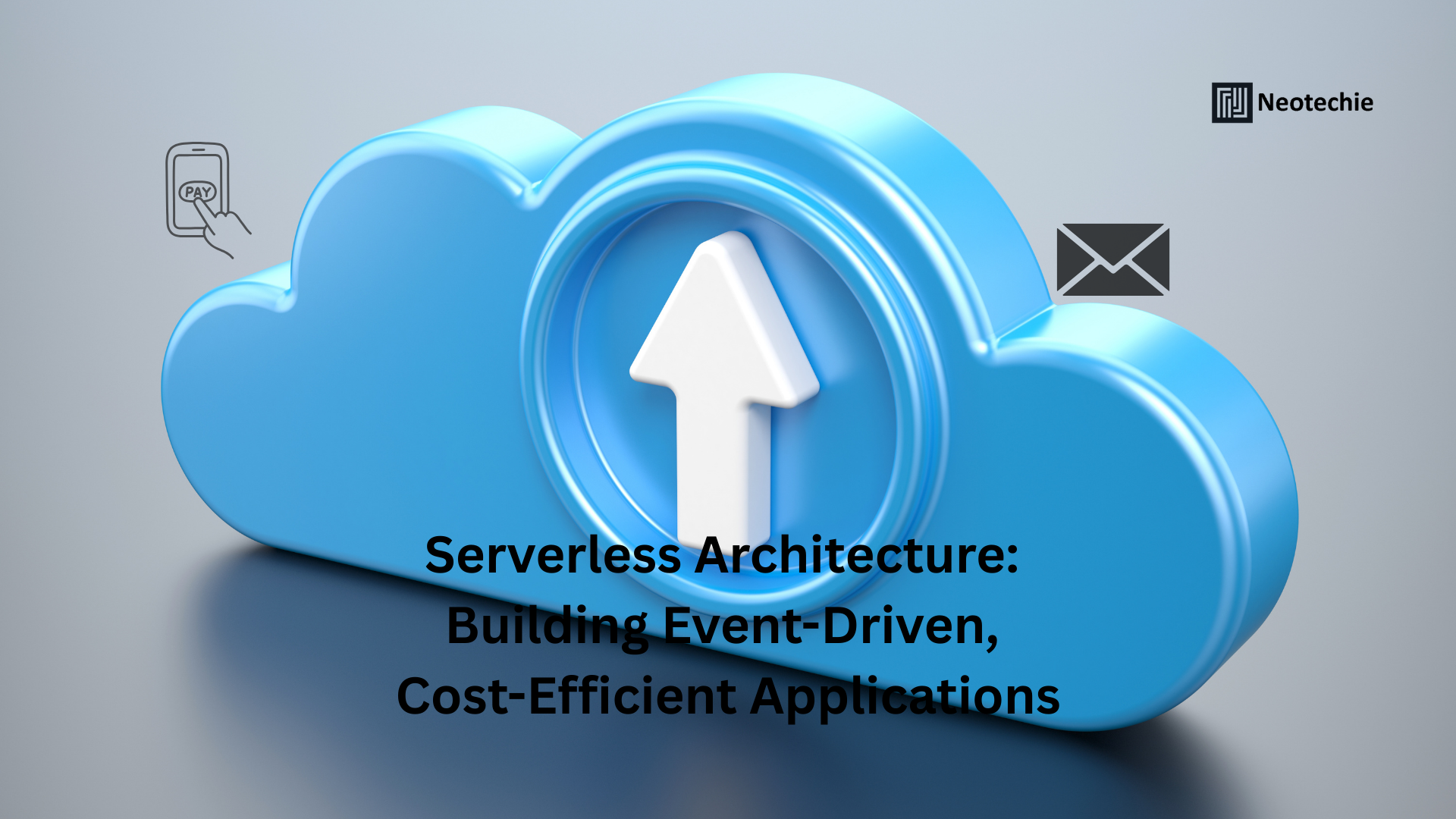Serverless Architecture in Software Development — Building Event-Driven, Cost-Efficient Applications
Transforming Development with Serverless Architecture
Modern software development demands speed, scalability, and cost efficiency. Traditional server-based architectures tie developers to infrastructure management, limiting agility and increasing operational overhead. Serverless architecture redefines this by abstracting server management, allowing developers to focus entirely on business logic. Applications are broken into event-driven functions that execute on demand, scaling automatically based on workload.
Adopting serverless architecture is not just a technical upgrade—it is a strategic driver of business transformation, optimizing resources, accelerating deployment, and reducing time-to-market.
What Serverless Architecture Brings to Software Development
- Automatic Scalability
- What: Serverless platforms allocate resources dynamically based on real-time demand, automatically scaling functions up or down as needed.
- Why: Manually provisioning servers for peak traffic or over-provisioning leads to inefficiency and higher costs. Automatic scaling ensures seamless performance under variable workloads.
- How: Functions are triggered by events such as HTTP requests, database updates, or message queues. For example, an e-commerce checkout function scales automatically during flash sales, ensuring uninterrupted transactions and a consistent, positive user experience.
- Cost Efficiency and Pay-Per-Use Model
- What: Serverless eliminates the need for dedicated servers, charging only for actual execution time and consumed resources.
- Why: Traditional server setups run continuously, incurring costs even during idle periods. Serverless ensures spending aligns directly with usage.
- How: Code executes only when triggered, optimizing resource utilization. Startups and enterprises with variable traffic patterns save significantly on operational costs, enabling better budget allocation and financial efficiency.
- Faster Time-to-Market
- What: Developers can focus entirely on writing and deploying business logic without worrying about infrastructure management.
- Why: Infrastructure-related tasks slow down development cycles and delay feature releases.
- How: Individual functions can be developed, tested, and deployed independently. For instance, a fintech startup can launch a new payment feature without provisioning servers, accelerating product innovation and maintaining a competitive edge.
- Event-Driven Design for Responsive Applications
- What: Serverless functions react instantly to events, enabling real-time, responsive application behavior.
- Why: Applications must respond to asynchronous triggers, like user interactions or IoT data streams, to provide smooth experiences.
- How: Functions are invoked by events such as database updates or API calls. A social media platform, for example, can process uploaded content immediately, enhancing engagement and creating interactive, real-time experiences.
- Simplified Maintenance and Operational Overhead
- What: Serverless eliminates the need for server provisioning, patching, or ongoing maintenance.
- Why: Traditional server management consumes significant resources and distracts teams from delivering business value.
- How: Cloud providers handle all infrastructure tasks, letting developers focus on code and features. This reduces operational complexity, minimizes downtime, and ensures continuous delivery of high-quality applications, freeing teams to innovate and improve core business outcomes.
Why Serverless Architecture Matters for Businesses
- Agility and Speed: Rapid deployment of features without infrastructure bottlenecks.
- Cost Optimization: Pay-per-use reduces wasteful spending.
- Scalability: Automatically adapts to fluctuating workloads.
- Innovation Enablement: Developers focus on delivering new business capabilities.
- Enhanced User Experience: Real-time responsiveness improves satisfaction and retention.
Driving Business Transformation Through Serverless Architecture
- Rapid Market Response: Launch features faster to capture emerging opportunities.
- Operational Efficiency: Reduced server management frees resources for strategic initiatives.
- Flexible Resource Allocation: Handle variable workloads effectively while minimizing costs.
- Enhanced Customer Engagement: Event-driven responsiveness leads to better interaction and retention.
- Actionable Insights: Integrated logging and monitoring provide real-time analytics to guide business decisions.
How Neotechie Can Help
At Neotechie, we empower businesses to leverage serverless architecture for transformative software development:
- Design event-driven, scalable, and cost-efficient applications tailored to your business needs.
- Implement serverless functions with automatic scaling for varying workloads.
- Optimize operational costs with a pay-per-use cloud strategy.
- Enable real-time event processing to deliver highly responsive applications.
- Provide consulting and support to ensure smooth adoption, maintenance, and continuous innovation.
Serverless architecture enables businesses to build applications that scale dynamically, respond instantly, and evolve continuously without the limitations of traditional server management. Neotechie helps organizations harness this architecture to drive agility, efficiency, and sustainable business growth. ✨

